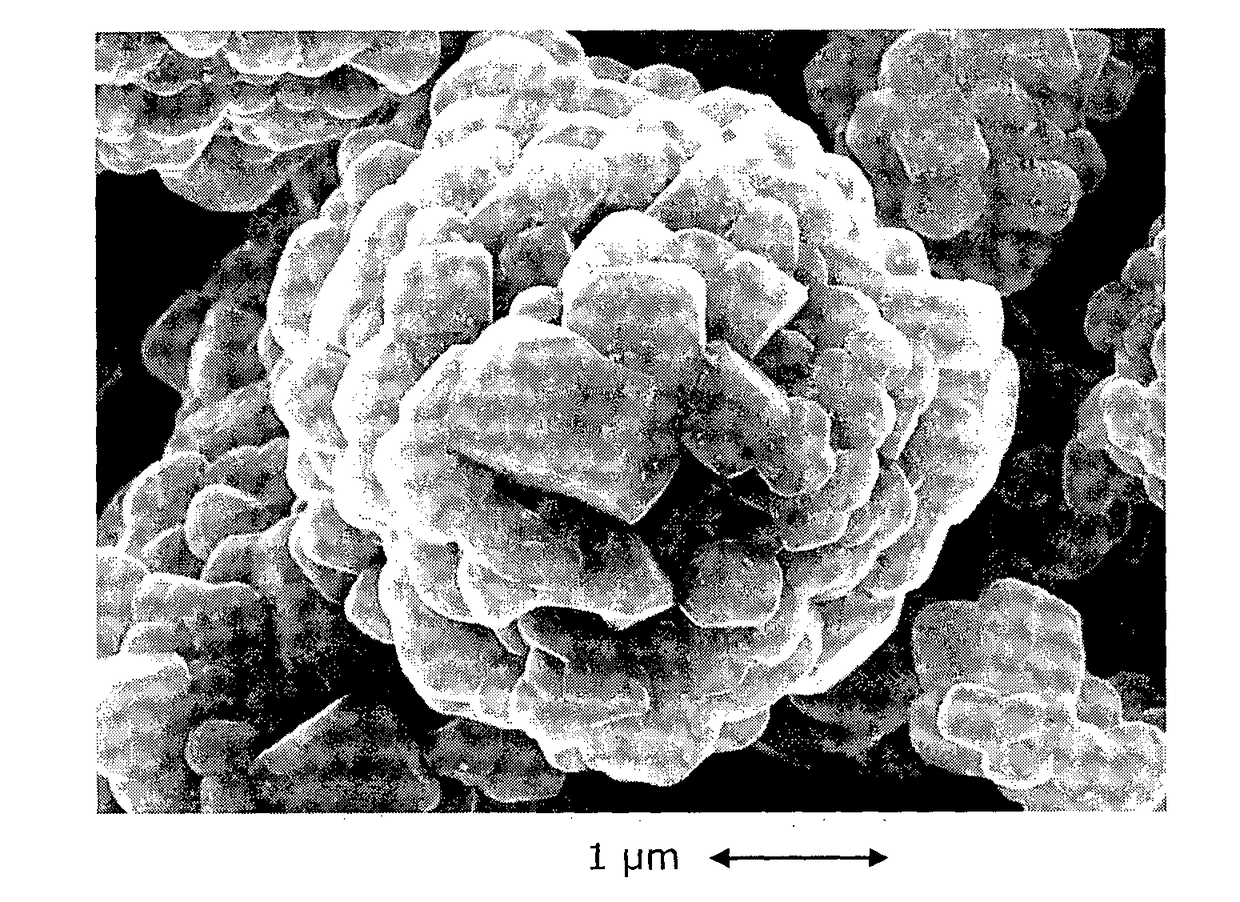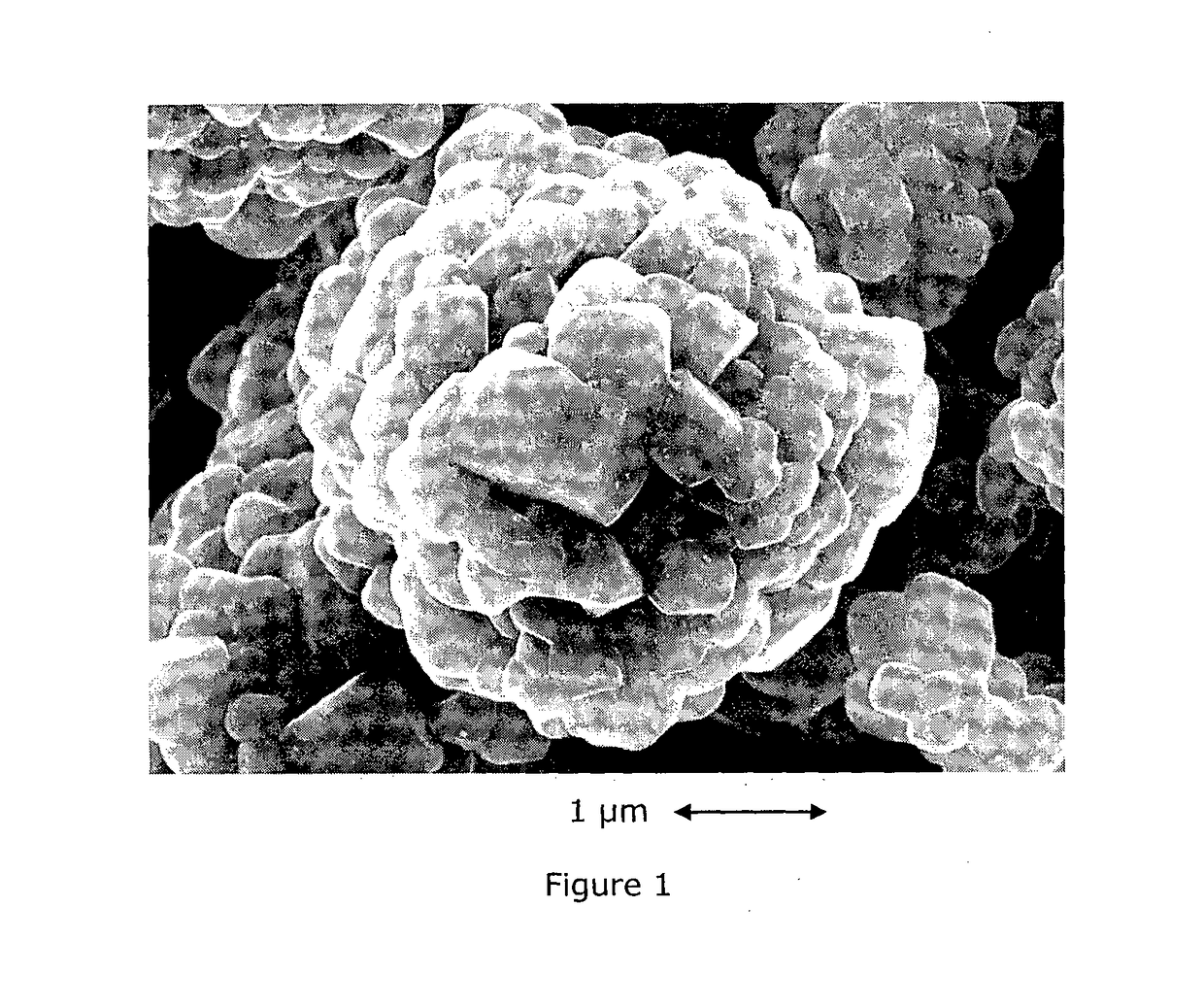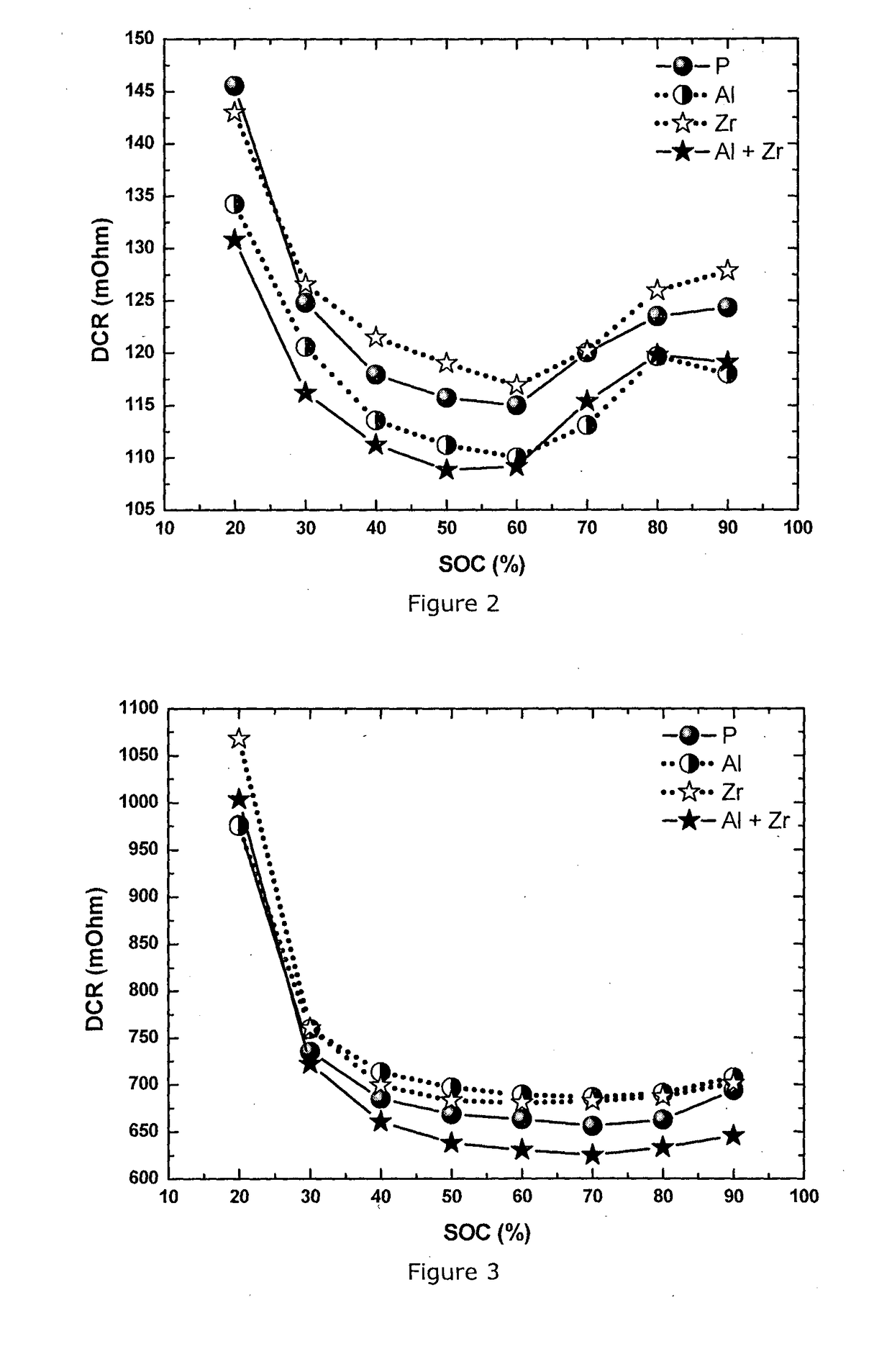Doped and Coated Lithium Transition Metal Oxide Cathode Materials for Batteries in Automotive Applications
a lithium transition metal oxide and cathode material technology, applied in the direction of batteries, sustainable manufacturing/processing, nickel compounds, etc., can solve the problems of increasing discharge capacity, increasing thermal stability, increasing the cost of lithium transition metal oxide cathode materials, etc., to achieve higher rates, reduce charge transfer resistance, and improve the effect of performan
- Summary
- Abstract
- Description
- Claims
- Application Information
AI Technical Summary
Benefits of technology
Problems solved by technology
Method used
Image
Examples
example 1
[0068]This example demonstrates that the Al-coated plus Zr-doped NMC433 cathode material delivers the best power performance compared to the pristine, only Al coated and only Zr-doped materials. NMC 433 stands for Li1.08M0.92O2, with M=Ni0.38Mn0.29Co0.33O2.
[0069]NMC 433 preparation: The doped and coated NMC433 was manufactured on a pilot line of Umicore (Korea), by the following steps: (a) Blending of lithium and Nickel-Manganese-Cobalt precursors and Zr oxide; (b) Synthesizing in an oxidizing atmosphere; (c) Milling and (d) Alumina dry-coating. The detailed explanation of each step is as follows:
[0070]Step (a): Blending of ZrO2, a lithium- and a Ni—Mn—Co-precursor having the desired final 433 composition using a dry powder mixing process, aiming at a molar ratio for ZrO2 of 1 mol %. The precursors are put in a vessel. The ZrO2 particles are in tetragonal and monoclinic phases, and have an average primary particle size of 12 nm and a BET of 60±15 m2 / g. They are mixed with lithium ca...
example 2
[0087]In this Example NMC111 material is prepared and integrated in a full cell using the same method as in Example 1. The powder has a D50 of 3-4 μm, and a Li / M ratio of 1.13 (corresponding to Li1.06M0.94O2). The content of Zr and Al is also the same: 1 mol % ZrO2 and 0.2 wt % alumina. The Example confirms the same effect in cathode material NMC111 as observed in Example 1: the combination of Al coating and Zr doping delivers the lowest DCR and thus the best power performance compared to pristine, only Al-coated or only Zr-doped materials. The HPPC testing conditions are the same as described in Example 1, and the DCR results at 25° C. and −10° C. are shown in FIG. 4 and FIG. 5, respectively.
example 3
[0088]This Example demonstrates that the Al-coated+Zr-doped NMC433 cathode material of Example 1 delivers the best cycle life at 45° C. compared to the pristine, the only Al coated and the only Zr-doped materials. For a positive cathode material used in electric vehicles which will probably be charged and discharged for at least a thousand times, it is very important to have a long cycle life corresponding to a good cycle stability. To estimate the cycle life of the cathode material within a short period in the lab, the 360 mAh pouch cell is cycled between 2.7˜4.2 V at both charge and discharge rate of 1 C. CC / CV mode is applied during charging while CC mode is used during discharging. The cycling is conducted in a 45° C. chamber, in order to simulate the worst condition, and to differentiate between cells. Both the difference in cathode materials and cell variation during preparation may lead to a difference in pouch cell capacity. All the cell capacities are normalized to the disc...
PUM
 Login to View More
Login to View More Abstract
Description
Claims
Application Information
 Login to View More
Login to View More - R&D
- Intellectual Property
- Life Sciences
- Materials
- Tech Scout
- Unparalleled Data Quality
- Higher Quality Content
- 60% Fewer Hallucinations
Browse by: Latest US Patents, China's latest patents, Technical Efficacy Thesaurus, Application Domain, Technology Topic, Popular Technical Reports.
© 2025 PatSnap. All rights reserved.Legal|Privacy policy|Modern Slavery Act Transparency Statement|Sitemap|About US| Contact US: help@patsnap.com



